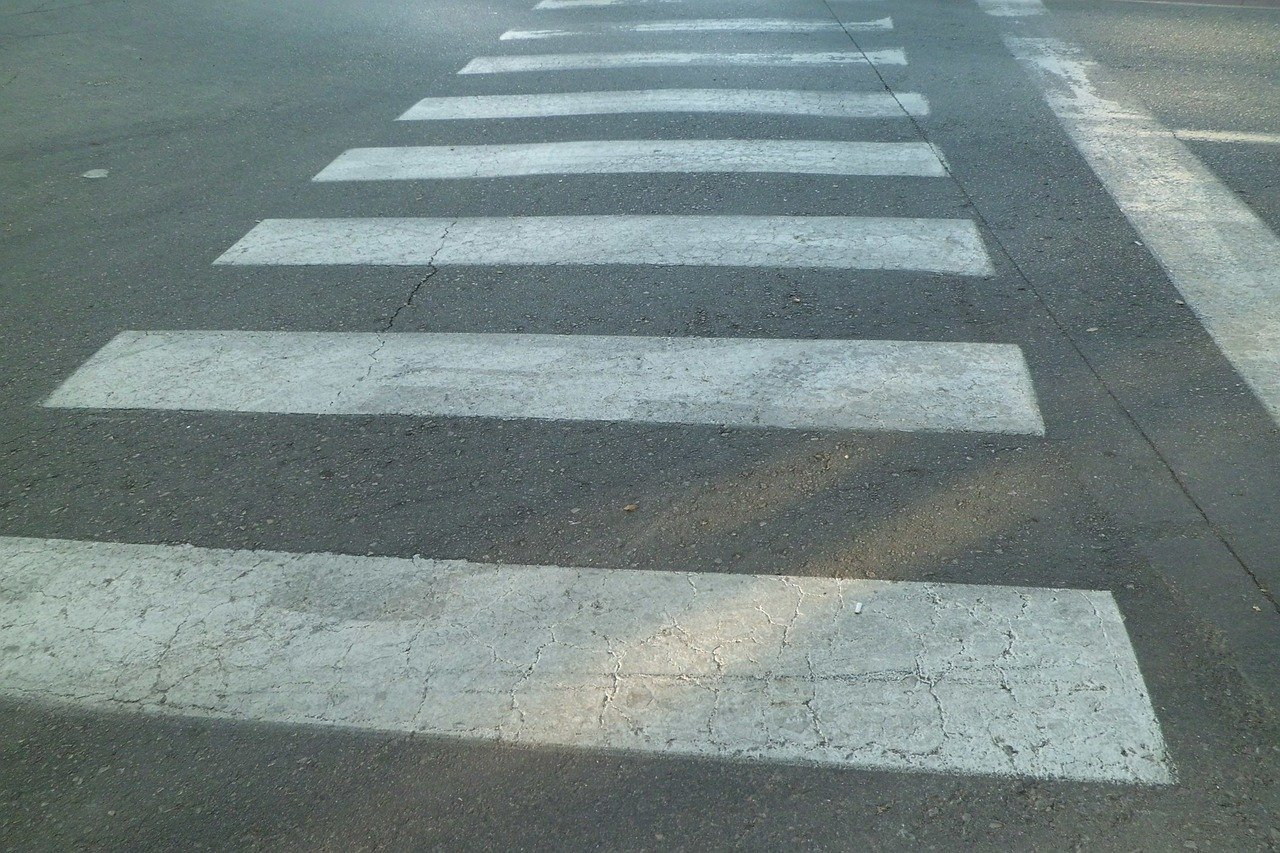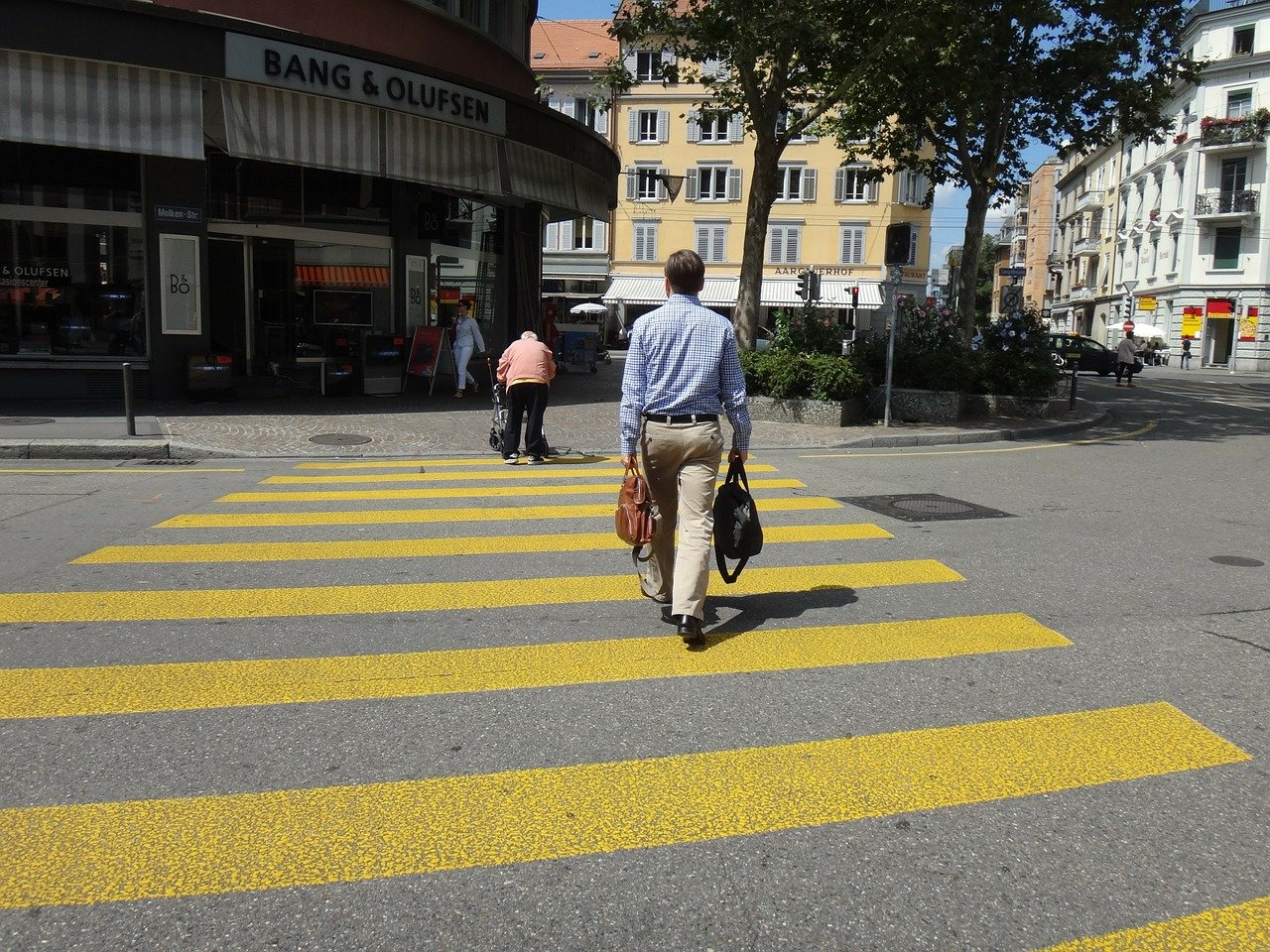












In the United States, traffic laws vary widely between states and even between municipalities within the same state. While everyone is familiar with the striped lines of a marked crosswalk, many people, drivers and pedestrians alike, aren’t aware that some places are considered unmarked crosswalks. For the most part, unmarked crosswalks are located at intersections where there aren’t painted lines, but where a crossing would be a logical extension of a sidewalk. In these unmarked crosswalks, drivers are required to yield to a pedestrian in exactly the same way as in a marked crosswalk.
In the United States, there are four basic ways for people to cross streets.
Many drivers and pedestrians believe that pedestrians automatically have the right-of-way in crossing the street, regardless of the circumstances. But that is not true. There is no universal right-of-way.
It is the responsibility of both drivers and pedestrians to try and avoid a potential accident. For example, if a pedestrian steps off a curb directly into the path of an oncoming car, the driver may not necessarily be deemed at-fault for the accident, since there was no opportunity to avoid it. In another case, a pedestrian who is jaywalking might be at-fault for an accident that occurs, because they weren’t crossing in a safe area. However, the driver would still need to do everything possible to avoid hitting the person, in order to not be considered liable.

Unfortunately, pedestrian-related traffic accidents are on-the-rise in many U.S. cities. In 2018, the number of pedestrians killed in traffic accidents rose by more than 3 percent, to a total of 6,2831. Cities and states are working to reduce the number of pedestrian-related accidents in several ways.
Some are blaming the increase in pedestrian-related traffic accidents on smartphones. More and more people are using their smartphones while walking and while driving, which is resulting in both groups paying less attention to their surroundings. A pedestrian who is texting might not look both ways before crossing the street. Or a driver who is using their phone for navigation, might look down and not see a pedestrian step off a curb in time to stop. Authorities are urging both drivers and pedestrians to be more vigilant and focus on their surroundings, rather than their devices.
Technology is evolving at a rapid pace, and a lot of it is being aimed at making our daily lives easier and safer. Makers of self-driving cars, for example, are working on a wide array of safety features meant to protect both drivers and pedestrians from accidents. Some other types of safety technology are already being integrated into cars on the market now, including pedestrian detection and automatic braking. These technologies are aimed at reducing, or even eliminating, pedestrian-related accidents.
Some places are reducing pedestrian-related accidents by making crosswalks more visible. In addition to the painted lines, there are a variety of safety products available to help drivers and pedestrians be more aware of crosswalks. For drivers, it can help them to notice a crosswalk earlier and give them more time to slow down for pedestrians who might be preparing to cross. For pedestrians, making crosswalks more visible can encourage people to cross in marked areas, instead of jaywalking. Specific configurations for pedestrian safety crossing systems vary, but can include tall, brightly-colored signs, flashing lights, lighted signals for pedestrians, and more.
There are also many ways that individuals can make crossings safer.
With increased focus on safety features and more vigilance by both drivers and pedestrians, we can decrease, or even eliminate the number of pedestrian-related traffic accidents and fatalities.
ELTEC has been a world-class manufacturer and innovator in traffic control signs, traffic safety equipment and overall traffic control products for nearly 50 years. Our goal is to significantly reduce the number of fatalities on our roads each year by implementing warning systems, and we are constantly coming up with new ways to innovate our products to provide you with the best possible safety and warning systems for your community. Contact ELTEC Traffic Products and Warning Systems today to learn how we can meet your pedestrian warning sign needs with state-of-the-art systems that are built to save lives.